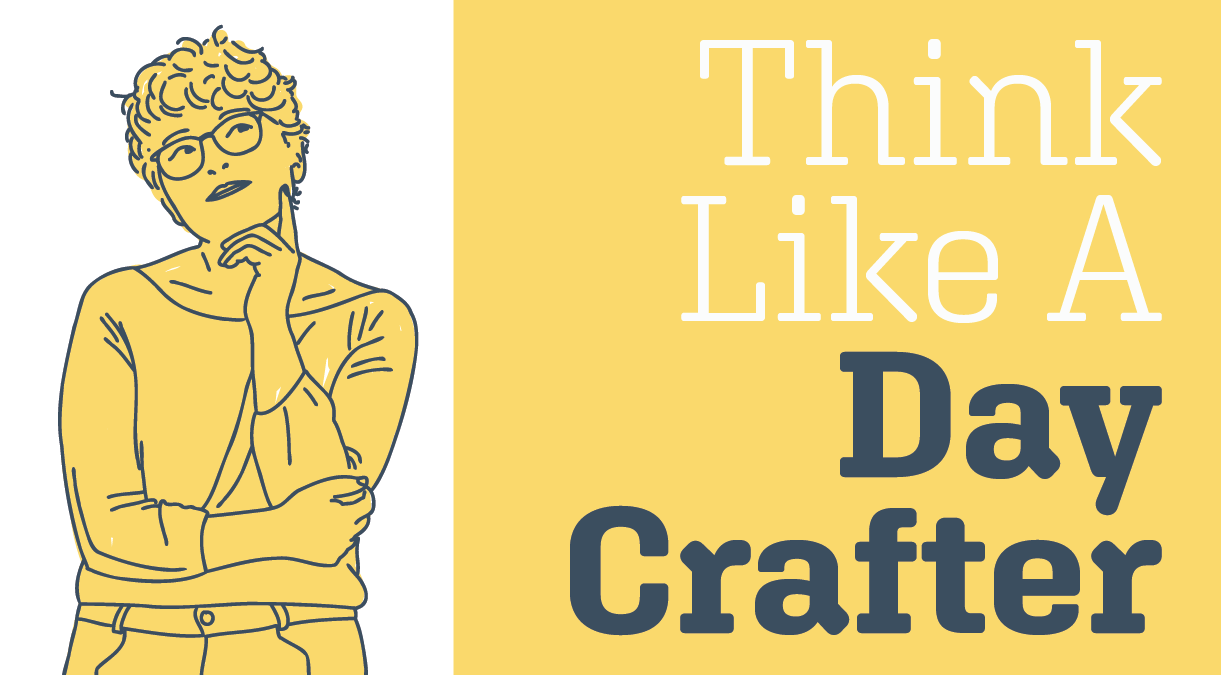How To Think Like A Day Crafter
I'm fortunate enough to be in control of my schedule, so why does the 9 to 5 work ethic, amongst other influences, still loom and glower over my thinking? I feel like a long departed influential industrialist striking a pose like Isambard Kingdom Brunel is shaping my choices. Along with him is a sports (or business) coach who talks about goals and winning and success. I think there is a capitalist media mogul in there too, pushing rumours and feeding worries about insecurities that I can purchase my way out of.

When I'm making decisions about what is important there are these influences that are hard to ignore. They are part of our upbringing and they're reflected by the culture around us.
But I've been rethinking my thinking. I find myself ready to think differently, to shrug off the industrialist, coach and capitalist and think instead as a craftsperson thinks.
Instead of thinking, what is my mission in life?
Think instead, how can I make today meaningful?
Instead of thinking, what future state will make me happy?
Think instead, how can I craft time for this today?
Instead of thinking, what should I add to my bucket list?
Think instead, how can I fully experience today?
Instead of thinking, how can I make more money?
Think instead, how can I release more time?
Instead of thinking, who do I want to become?
Think instead, how can I be more myself today?
Instead of thinking, how am I ever going to finish this task?
Think instead, how can I break the task into complete-in-a-day size chunks?
Instead of thinking, how can I cope with the fear of big changes?
Think instead, what small change can I experiment with today?
Instead of thinking, what is urgent?
Think instead, what is important?
Instead of thinking, what should I know about the future?
Think instead, what problem can I solve today?
Instead of thinking, how can I win the game?
Think instead, how can I practice better?
Instead of thinking, how can I keep everyone else happy?
Think instead, how can I make time for what I need today?
Instead of thinking, how can I face tomorrow?
Think instead, how can I make sleep and self-care effective today?
Instead of thinking, what great results should I focus on?
Think instead, how can channel my energy into better practice?
Instead of thinking, how do I make a successful innovation?
Think instead, how do I do brilliant innovating?
Instead of thinking, when will I arrive?
Think instead, how do I take the next step?
The Practice
Future you doesn't exist.
Think like a craftsperson, bring your attention to the working surface of the day. Keep your tools sharp. Invest as much of your energy as you can into your daily rhythm and practice.
Written by Bruce Stanley on Fri, March 19, 2021
Please share this
Related posts
Introductory Workbook – Learn Day Crafting at your own pace
Here is the first in a new Apprentice Series of Day Crafting workbooks. This works as a standalone course or as a compliment to the Day Crafting Apprentice Course – or as a refresher if you've completed the Day Crafting Apprentice Course. Further workbooks are available here.
In this post you will find some photos from the workbook, a free sample to download containing a range of example pages and a link to buy the book.
